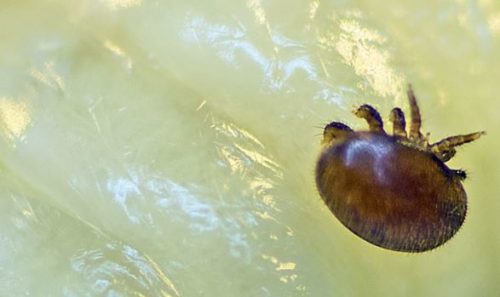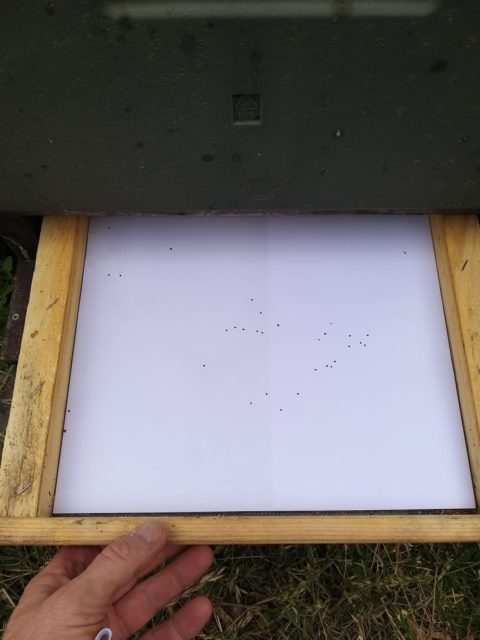
Why talk about a parasite? Because only bee colonies in balance are good bioindicators.
All the INSIGNIA colonies are taken care of by our Citizens Scientist. They run the colonies as they use to. The aim is to supply a pollination service og create a honey production. The, probably, biggest treat against the honeybee colonies is the parasitic mite Varroa destructor. The mite is from 1-1,5 mm. Rather small. Varroa is living on the honeybees and does multiply in the sealed brood of the honeybees. It only bread on honeybees.
The mite does feed on the fat-bodies of the brood. They also activate and transfer virus. This is very problematic as well. In general, the mite does double up for each month during the season. After 2-3 years the colony do break down unless the beekeepers do some kind of treatment. As we could see for the sampling in 2019 for Denmark, we saw relative high amount of thymol in the Danish samples. Thymol is regarded as an organic treatment against varroa. Lot of efforts are put into bread for varroa tolerant honeybees. But this is for sure a very slow process.
To keep track on the varroa situation beekeepers have to monitor the level of varroa in the colonies. This can be done by looking on the natural mite fall during the end of May. Beekeepers place an insert below the bottom board. Beekeepers do calculate then natural mite fall per day. For Denmark, if the mite fall is below 2 mites/day, the colony is in the green light area (low no of mites), if the number is between 2-8, the colony is in the yellow light area (beekeeper needs to be alert and focus on timing action on the varroa treatment), if the number is above 8 the colony is in the red light area (means treatment right away).
In the INSIGNIA apiary 1 and 2 the mite level is very low. We did not find any mites in the insert.
Flemming Vejsnæs


